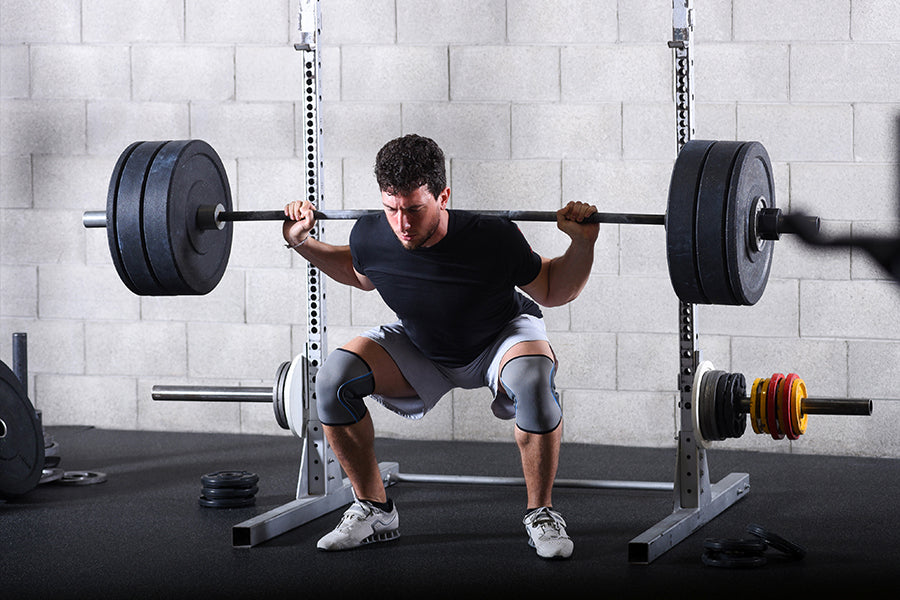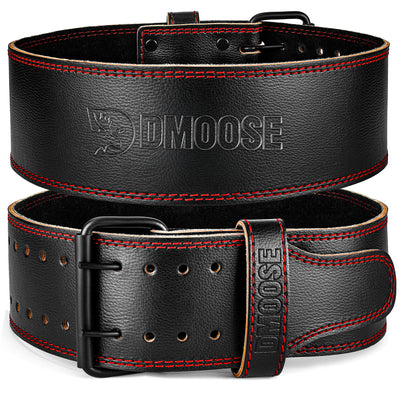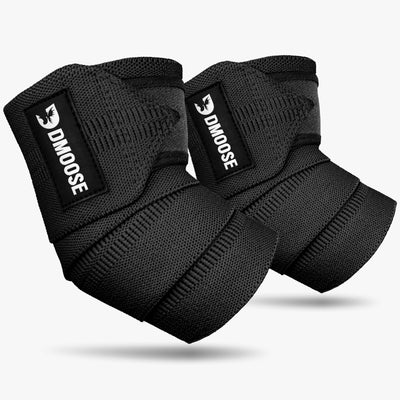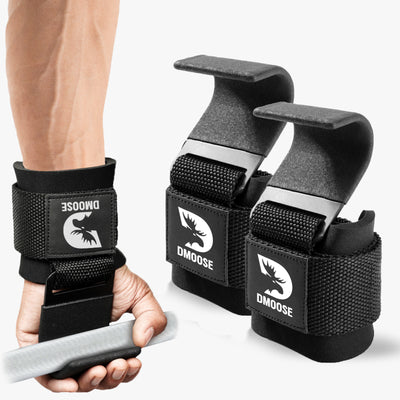You’re training hard, logging sets, and leaving the gym wrecked, yet your muscle growth has stalled. Go heavier, and your joints bark. Go lighter, and it feels like your muscles aren’t “switching on.”
Your lungs burn during high‑rep sets, but your biceps still won’t fill the sleeves. If this feels familiar, you’re not alone. The problem usually isn’t motivation; it’s a rep-range and load strategy that doesn’t match your physiology, your fatigue, or your goals.
This blog is an inspiration from Dr. Mike Israetel’s work, specifically a Renaissance Periodization video discussing how heavy you should train for maximal muscle gains.
We took the big ideas, translated them into plain language, and added practical programming tips and DMoose gear suggestions to make your next training block your best yet.
The Science of Training Load and Muscle Growth
Muscle hypertrophy, or muscle growth, depends on a balance of tension, volume, and fatigue. When you lift very heavy weights, you create high tension but fewer reps. When you lift lighter weights, you perform more reps, but each one creates less tension. The best growth happens between these two extremes.
Tension Over Time: Why Effort Is Not Enough
Imagine muscle growth as filling a glass of water. Tension is the flow of water, and time under tension is how long the faucet stays on. A single heavy rep creates a quick splash, but the cup does not fill. Performing 8 to 20 reps with moderate intensity allows tension to build long enough for growth to happen.
If your weights are too light, even hundreds of reps will not help. Dr. Mike compares it to a whisper instead of a shout. Your muscles barely notice the effort. That is why marathon runners, despite their endurance, do not have large leg muscles. Each stride creates very little tension.
Finding the Optimal Rep Range for Muscle Growth

Research and experience show that the best range for muscle growth is between 5 and 30 reps per set, as long as you train close to failure.
Beginners: Focus on 5 to 10 Reps for Strength and Technique
If you are new to lifting, your main goal is not to destroy your muscles; it’s to build a foundation. During the first 6 to 12 months of training, your biggest gains actually come from your nervous system learning how to coordinate your muscles efficiently. You are literally teaching your body how to lift.
That’s why Dr. Mike Israetel recommends focusing on sets of 5 to 10 reps using moderate to moderately heavy weights. This range gives you enough tension to stimulate strength and muscle growth without overwhelming your body with fatigue. It also allows you to focus on proper form, breathing, and bracing.
At this stage, it’s not about how much you lift but how well you lift. Every rep is a lesson in movement control, balance, and posture. Think of it as laying the bricks for a strong, long-term physique.
To stay safe while learning compound lifts like squats and deadlifts, use supportive gear like the DMoose 5mm Weightlifting Belt. It helps stabilize your lower back and core, allowing you to maintain proper alignment during heavy movements.
Beginner Principles
- Choose 5–6 foundational movements (squat, bench press, deadlift, overhead press, row, and pull-up variations).
- Keep your sets between 5 and 10 reps, staying 2–3 reps shy of failure.
- Focus on perfect technique and controlled tempo, not speed or ego lifting.
- Rest fully between sets (2–3 minutes) to maintain quality performance.
Remember, your strength will improve naturally as you master form. Once your lifts feel stable, then you can start increasing intensity or volume.
Related Article: 12-Week Full-Body Workout Plan for Beginners
Intermediate Lifters: Expand Your Range from 5 to 20 Reps
After one to three years of consistent training, your body becomes more efficient. You’ve built coordination, your technique is solid, and now it’s time to introduce variety to stimulate further growth.
Dr. Mike explains that as you become more trained, you need more volume to grow, but that volume must be intelligently managed. Too much heavy lifting can drain recovery, while too many light sets may not create enough tension.
This is where the 5–20 rep range shines. It gives you flexibility to train across different intensities while keeping your joints and muscles healthy.
For big compound lifts like squats, bench presses, and rows, continue to use heavier sets of 5–10 reps to maintain and build strength. But for isolation movements, like bicep curls, tricep pushdowns, and lateral raises, shift to moderate loads for 12–20 reps. These higher-rep sets increase metabolic stress, one of the key signals for muscle hypertrophy.
Intermediate training should feel challenging but sustainable. You should leave each session feeling worked, not wrecked. Your sets should approach failure (1–2 reps shy), not collapse into poor form.
Joint health becomes more critical now because you’re handling heavier weights more often. The DMoose Elbow Wraps help by stabilizing your joints during pressing and pulling exercises. They minimize strain on tendons so you can push harder while maintaining good form.
Intermediate Tips
- Alternate between strength-focused (5–8 reps) and hypertrophy-focused (10–20 reps) phases.
- Keep your rest periods flexible: 1–3 minutes for heavier lifts, 30–90 seconds for isolation work.
- If your performance drops dramatically across sets, reduce the load slightly.
- Continue prioritizing recovery through sleep, nutrition, and active rest days.
This stage is where many lifters either make huge progress or stall completely. The difference lies in balancing intensity with recovery, something Dr. Mike emphasizes heavily. If you are always sore or drained, you’re not recovering enough to grow.
Advanced Lifters: Use All Ranges from 5 to 30 Reps
Once you reach an advanced level, typically after 3 to 5 years of consistent, intelligent training, your body adapts quickly. Gains slow down, and your muscles require greater precision in programming to keep growing.
At this stage, all rep ranges from 5 to 30 can be effective if the sets are taken close to failure. Advanced lifters benefit from periodized training, cycling through different intensities to prevent plateaus and manage fatigue.
Example Periodization
- Strength Phase: 5–10 reps, heavier loads, longer rest periods (3–5 minutes).
- Hypertrophy Phase: 10–20 reps, moderate loads, shorter rests (60–120 seconds).
- Endurance or Pump Phase: 20–30 reps, lighter loads, higher fatigue, and shorter rests (30–60 seconds).
Dr. Mike explains that these variations target different muscle fibers and create distinct growth signals. Heavy work builds deep, dense muscle tissue, while higher reps create metabolic stress and cellular swelling, both important for maximum hypertrophy.
At this level, recovery and precision are everything. You must track performance closely, rotate exercises strategically, and manage fatigue before it becomes chronic. Using supportive gear becomes essential for longevity.
The DMoose Lifting Hooks are particularly valuable here. During heavy pulling movements like rack pulls, Romanian deadlifts, or high-rep lat pulldowns, your grip often gives out before your back does. Lifting hooks eliminate that limitation, allowing you to focus purely on muscle tension and contraction.
Advanced lifters should also implement deload weeks every 4–6 weeks to recover and reset. Reducing intensity and volume temporarily helps restore strength and sensitivity to training stimulus, which means better long-term progress.
Finally, advanced training requires auto-regulation, listening to your body and adjusting based on how you feel, not just following a rigid plan. Some weeks you’ll push harder; others you’ll scale back slightly to manage recovery. That adaptability is what separates experienced athletes from those who burn out.
Understanding Stimulus to Fatigue Ratio

Dr. Mike often discusses the Stimulus to Fatigue Ratio, or SFR, which measures how much muscle growth stimulus you get compared to how much fatigue you create.
- High stimulus with low fatigue means good training.
- Low stimulus with high fatigue means poor training.
If your sets cause extreme soreness or joint pain but little muscle growth, your SFR is poor. Try changing the rep range or switching to less taxing exercises.
For example, replace heavy barbell rows with higher-rep dumbbell rows or machine rows using DMoose Lifting Straps. This reduces grip fatigue and keeps tension where it belongs—on the target muscles.
Common Mistakes That Block Muscle Growth

Even the most dedicated gym-goers can make simple mistakes that stall progress. Here are five common ones:
1. Training Too Heavy Too Often
Doing sets of one to four reps too frequently builds strength, not size. It may feel satisfying to lift big numbers, but muscles grow best from slightly higher rep ranges that allow more total work. Save very heavy sets for testing days, not every day of training.
2. Going Too Light Without Effort
High-rep training only builds muscle if you push close to failure. If your 20th rep feels as easy as your first, it will not trigger hypertrophy. You need to challenge your muscles with real effort, regardless of the weight used.
3. Ignoring Recovery
Recovery is where growth actually happens. Training hard without resting properly leads to fatigue and slower results. Use the Foam Roller to release tight muscles and improve circulation. Good recovery practices keep you consistent and strong.
4. Using the Same Rep Range for Every Muscle
Not all muscles respond the same way. Your chest may grow best from heavier work, while your arms might respond better to lighter, higher-rep training. Track what feels most effective and adjust accordingly.
5. Copying Influencers Without Context
What works for professional athletes may not work for you. Genetics, recovery capacity, and even supplements all play a role. Focus on your own progress and avoid copying someone else’s routine blindly.
How to Apply the Science to Your Workouts

1. Warm Up Properly
Start every session with light mobility work and activation drills. Use resistance bands or bodyweight movements to prepare your joints and muscles before lifting.
2. Start with Heavy Compounds, End with Light Isolation Work
Begin with big lifts in the 5 to 10 rep range to activate fast-twitch fibers. Finish with isolation movements in the 12 to 20 range to maximize pump and metabolic stress. This combination ensures complete muscle activation.
3. Progress Gradually
Muscle growth requires steady overload. Add small amounts of weight, reps, or sets each week. Avoid the temptation to ego lift. The goal is steady progress, not one-time records.
4. Manage Fatigue and Plan Deloads
Take a deload week every four to six weeks. Cut your training volume in half and reduce intensity slightly. This gives your body time to recover and keeps your progress sustainable.
5. Track Recovery and Performance
Pay attention to your sleep, mood, strength levels, and soreness. If fatigue builds up, scale back slightly. Recovery tools like a Massage Gun or a foam roller help relax tight muscles and speed up healing.
The Takeaway
Training too heavy or too light both hold you back. The best muscle growth happens when you find the middle ground between weights that challenge you while allowing proper form and enough volume.
Tension, volume, and recovery are the three pillars of hypertrophy. Adjust each one based on your experience level and how your body responds. When you consistently apply these principles, you will finally see the muscle growth you have been chasing.
Building muscle is not about lifting the heaviest weight or doing endless reps. It is about lifting smart, applying enough tension, and recovering properly.









